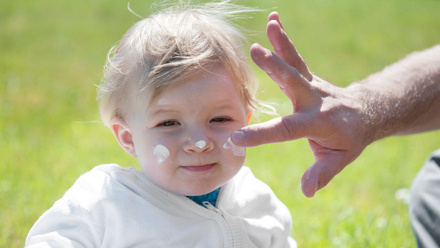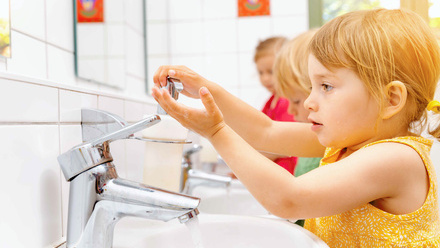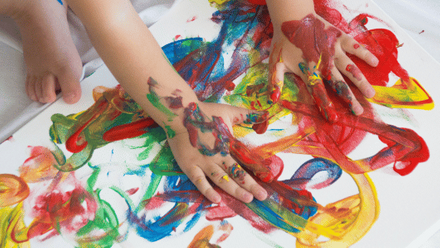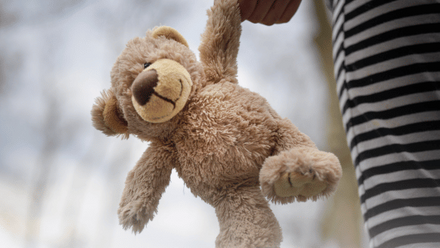Common signs of emotional abuse in young children
We talk a lot about emotions in the early years and it is a huge part of our practice every day. We support babies to co-regulate their emotions, equipping them with the tools to learn how to self-regulate in the future. We sit with distressed toddlers and help them find the words to identify these confusing feelings bubbling inside them. We support little minds to grow, to understand how they impact others and the choices they have.
The early years are vital to developing a secure sense of self, building meaningful relationships and learning to recognise and regulate how we feel. This can only be done when a child feels safe, in a trusted place with people they know they can depend on.
Unfortunately, there are children in our communities that do not have a safe and stable environment to explore their emotions, which can have detrimental consequences on their immediate wellbeing and beyond.
In this article, we are going to explore what emotional abuse is and what some of the warning signs might be for babies and toddlers.
Emotional abuse can be defined as "the persistent emotional maltreatment of a child so as to cause severe and persistent adverse effects on the child’s emotional development". It is not just ‘telling off’, but is done in such a way as to scare, embarrass or make a child feel alone. It may include having expectations of the child that are not age-appropriate or overprotecting them. Traditionally, this might sometimes look aggressive, such as shouting at a child or threatening them, but it is often displayed in more discreet or indirect ways, like exposing them to distressing situations, or never praising them and always highlighting their faults.
Emotional abuse is a complex area of safeguarding because it is very subjective, meaning it can be taken in a number of ways depending on the perspective and attitude of the people involved. But abuse is abuse and no child should be made to feel anxious, isolated or unwanted.
Safeguarding is everyone’s responsibility and early education and care settings have a vital role to play in helping to keep children safe. Settings are commonly a place where children spend many of their waking hours and therefore are in a prime position to identify any changes in behaviour and supporting families through challenging times.
Emotional abuse can be difficult to spot in younger children because they are only just beginning to recognise their emotions and identify how they present. Emotions can be sporadic and complex, which makes it less obvious to know when something is wrong. It is so important to be clued up on how emotional abuse may present in children already struggling to identify how they feel.
Whilst observational concerns (when we see signs ourselves that cause us concern) are more common than disclosures (when a child tells you something directly), recognising signs of abuse with younger children becomes paramount because many young children will not yet have the words to tell us something is wrong.
Emotional abuse can present differently in different children and is often not an isolated type of abuse. For example, children who are subject to physical abuse are likely to feel scared, vulnerable, and isolated, as well as contending with the physical hurt caused.
Whilst emotional abuse comes in many different forms, here are some common signs in children that can help you to identify a young child at risk:
- Changes to behaviour that coincide with drop-off and pick-up, particularly if you notice this behaviour around a specific person.
- Some infants might seem overly wary and anxious of adults but, equally, others might be overly affectionate and ‘clingy’ with unfamiliar people.
- Getting easily upset at minor incidents, such as knocking over a drink or losing a game.
Whilst signs in children are key to recognising potential children at risk, observations of the context they interact with are also crucial. For example:
- A parent/caregiver might make degrading comments and jokes about the child in an open space.
- Adults could appear uninterested in their child’s handover, consistently not attend parent evenings, respond to concerns, or engage with learning journals.
- Other signs of domestic abuse or anti-social behaviour (such as drug/alcohol misuse) within the family context that the child could be exposed to.
Emotional abuse, otherwise known as psychological abuse, has a significant impact on the child not only in the time they are subject to it but for years and years to come.
Developmentally, as children grow up, we expect them to develop greater self-regulation capacity and stronger emotional resilience that allows them to ‘bounce back’ from difficult feelings. But children who have been victims of emotional abuse are likely to have a developmental delay with their emotions. For example, they might experience extreme outbursts of anger and upset or act in a way that appears ‘immature’ for their actual age.
Children who are subject to emotional abuse are more likely to develop mental health issues, such as depression and anxiety. As adults, they might be more vulnerable to anti-social behaviour themselves, like drink and drug misuse, aggressive behaviour, or intentional isolation from others.
What to do if you have concerns
Safeguarding and Child Protection is everyone’s responsibility and we should never assume that ‘someone else’ will act. If you have any concerns about a child, no matter how small, get in touch with your setting Safeguarding Lead who can advise you on the next steps.
Key takeaways
Any child can be at risk of emotional abuse regardless of their age and background so it is important to remain vigilant to signs and symptoms, and to know what to do if you have a concern.
For further information, you can visit NDNA to explore safeguarding and child protection in nurseries to find helpful advice and training opportunities.






